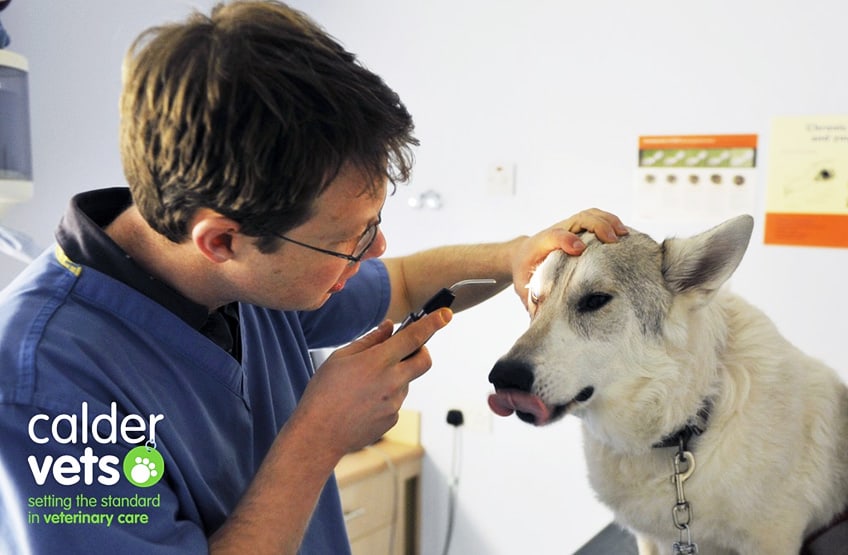A healthy dog's eyes should be clear, bright, and free from dirt, discharge, and inflammation. However, it is quite common for dog eye problems to occur, here is a guide of how to spot eye problems in your dog and how to provide treatment.
Looking After Your Dog's Eyes
Common Eye Conditions and Symptoms
- Keratoconjunctivitis Sicca (Dry Eye) - This occurs when your dog's tear glands do not produce enough tears, resulting in recurrent or chronic conjunctivitis and persistently sore eyes. If left untreated, this condition can even lead to blindness. Though all dogs are susceptible, certain breeds, such as West Highland Terriers, Cavalier King Charles Spaniels, and Cocker Spaniels, seem to be more prone to this problem.
- Conjunctivitis - An inflammation of the membrane that covers both the inner lining of the eyelid and the white of the eye. It can be caused by infections, allergies, inadequate tear production, or irritation.
- Corneal Ulceration - This can occur when the shiny surface of the cornea is scratched or damaged.
- Epiphora - If your dog's eyes constantly "weep", or if the fur around them appears "stained", then the normal tear flow may be blocked, and you should contact your vet immediately.
- Cataracts and Glaucoma - Dogs are just as susceptible to these conditions as humans. Cataracts cloud the lens inside the eye, and are the most common cause of blindness in dogs. A hereditary condition in some breeds, early examination by your vet is vital, as such animals should not be bred. Glaucoma stems from too much pressure being exerted upon the eye's interior as a result of a decrease in the amount of fluid draining from it.
Common Symptoms of Illness
- Red inner eyelids
- Matter on the surface or in the corner of the eye
- Cloudiness within the eyeball
- A dull eye surface
- The "third eyelid" coming across the eye surface
- Excessive tearing or unusual discharges
- Tear-stained fur around the eyes
Eye Tests to Help Diagnose Problems
- Fluorescein helps to identify corneal ulcers
- Schirmer Tear Test determines the level of tear production
- Ocular pressure is used to detect glaucoma
- Ophthalmoscopes can be used to see inside the eye chamber
How To Treat Canine Eye Problems
Many canine eye problems can be treated at home with regular administration of eye drops or ointment. When diagnosing treatment, our vets will tell you everything you need to know about applying the drops or ointment, and about dosages. But for ease of reference, we've prepared this handy guide.
How To Administer Eye Drops
- You may need to muzzle your dog
- Remove any discharge from around the eye with a cotton ball moistened with warm water
- Read the instructions on the bottle for dosage information, and shake if necessary
- Use one hand to hold the bottle between your thumb and index finger, and place the other under your dog's jaw to support their head
- Tilt their head back, and to prevent blinking, use your free fingers to hold the eyelids open
- Hold the bottle of drops close to the eye, but don't touch the eye's surface
- Squeeze the drops onto the eye, and once they're in, release the head
- Your dog will blink, spreading the medication across the eye's surface
How To Administer Eye Ointment
- You may need to muzzle your dog
- Remove any discharge from around the eye with a cotton ball moistened with warm water
- Read the instructions on the tube for dosage information
- Gently pull back the upper and lower eyelids
- Hold the tube parallel to the lower eyelid, and squeeze the ointment onto the edge of the eyelid
- Massage the upper and lower eyelids together to spread the medication
- Release your dog's head and allow them to blink, further spreading the medication across the eye's surface
If you have any questions or concerns about your dogs eyes, contact your local Calder Vets branch, we're always here to help.



Our Services